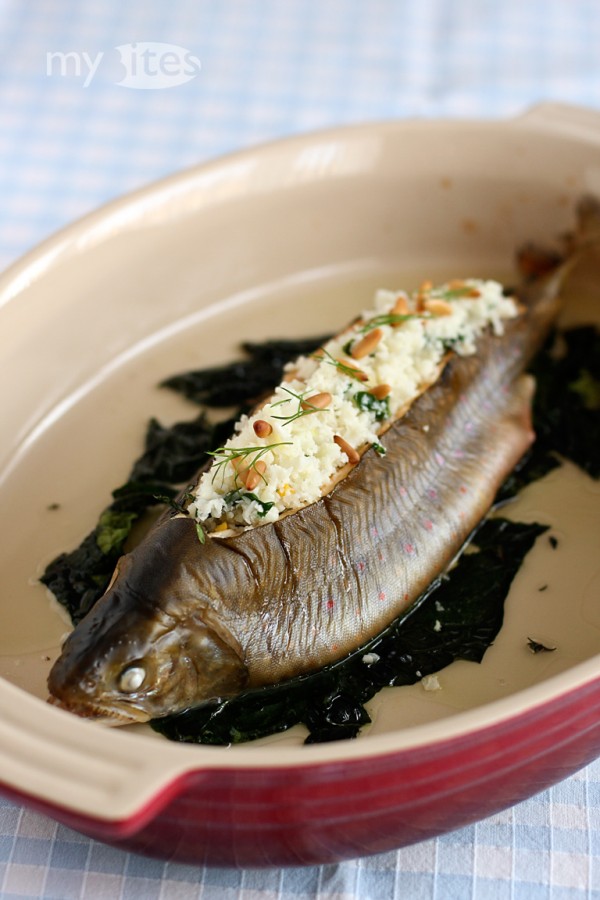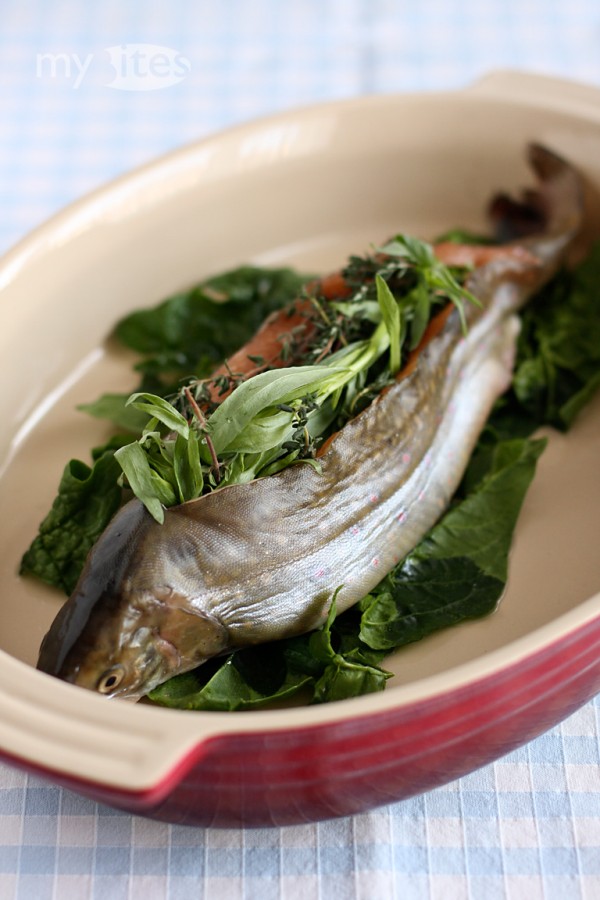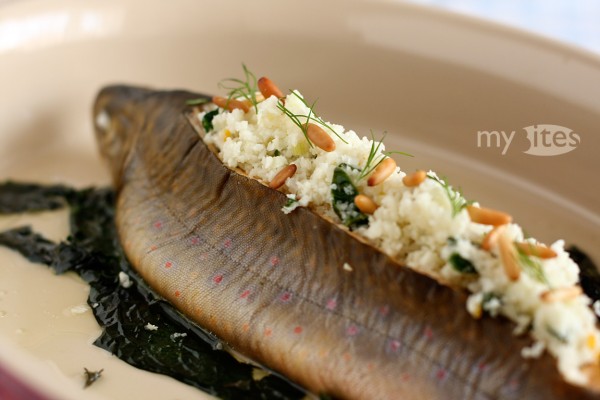Have you ever wondered why fish in Germany – and almost everywhere in Europe – is gutted with a cut at its belly? It’s straightforward to some extent, because all innards are located in the belly, and by removing them along with the gills, the fish can be kept refrigerated 3-4 days longer. In China I noticed that fish are usually kept alive in restaurants and killed to order. An even more interesting experience was to see that all fish was cut open and gutted from its back, so the bellies of the fish were always completely intact. I liked this back filleting method simply because the possibilities of stuffing and serving a whole fish. Unfortunately, at the local market in Erlangen they don’t sell any fish alive and all of them are already gutted via a cut along their bellies. So my filleting from the back basically resulted in two fillets held together by the head and the tail of the fish, but made the seasoning of the whole fish a lot simpler and more precise.
I stuffed the fish with fresh tarragon and thyme, but you can use almost any other herb as well. Because the meat on the fillets of the fish were completely open and accessible, they absorbed the salt, pepper and the flavor of the herbs much better.
As garnish I cooked a cauliflower couscous. The original idea of preparing a couscous from the crumbly surface layer of cauliflowers came from the ingenious Ferran Adrià and his team at el Bulli. Actually he used a microplane to rub off the crumbly bits of a cauliflower’s surface. Because the yield is very limited and I wanted to use the remaining parts of the cauliflower as well, I decided to pick the cauliflower into small florets and chop them with 4-5 short pulses using a blender into a couscous-like texture. This method didn’t result in uniform crumbs, but it’s a very fast and simple way to get close to a couscous-like consistency. Enhanced by additional vegetables, this cauliflower couscous can be prepared as a fast and simple vegan or vegetarian supper as well.
[amd-zlrecipe-recipe:40]


